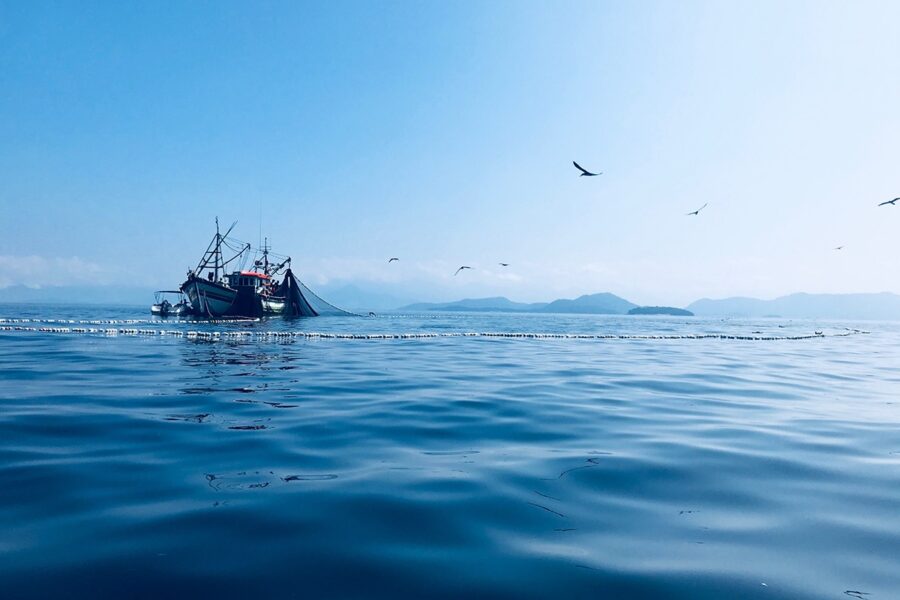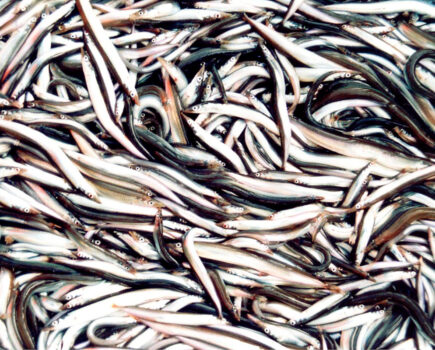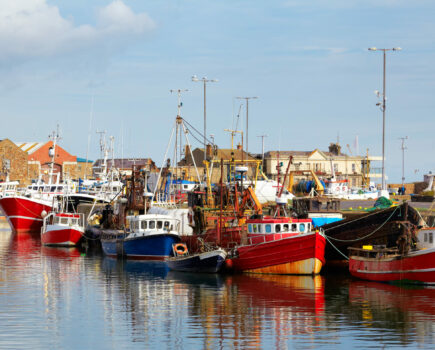Defra has announced proposals for the first of a number of highly protected marine areas (HPMAs) in English waters where all fishing will be banned – effectively ‘no-take zones’, reports Tim Oliver.
The setting up of a network of HMPAs was recommended in the Benyon Review that was published in 2019.
Five pilot areas have been announced, which the Benyon Review said was ‘the bare minimum’ needed to cover different marine environments and activities.
Two are inshore, in Allonby Bay in the Irish Sea and Lindisfarne in the northern North Sea, and three are offshore sites: northeast of Farne Deeps in the northern North Sea, the Inner Silver Pit South in the southern North Sea, and Dolphin Head in the Eastern Channel.
Defra has said it will consult on the five candidate pilot sites ‘imminently’.
Environment minister Rebecca Pow said: “Highly protected marine areas will offer the highest levels of protection in our seas. They will help a wide range of valuable habitats and species to fully recover, boosting the resilience of our ecosystem and allowing the marine environment to thrive.
“As demands on our oceans increase, it is more important than ever that we take decisive action to safeguard nature, whilst ensuring we can continue to meet the sustainable needs of those who rely on our seas.” The NFFO has slammed the process – not so much with regard to the choice of individual sites, which will now be subject to consultation, but because of the exclusion of fishing industry representative organisations from the whole process of establishing HMPAs. “Whilst the government has worked with environmental NGOs, there has been no parallel engagement with the fishing industry – the sector that is likely to be the most impacted by HPMAs,” said chief executive Barrie Deas.
“At the same time, the government has failed to provide any coherent policy to deal with the inevitable displacement effects of its marine protection policies and the accelerated expansion of offshore wind.
“As 38% of English waters are now designated as Marine Protected Areas, a spatial squeeze, displacing fishing vessels from their customary grounds, is now an imminent reality. Forcing inshore fishing vessels to steam further offshore, or offshore vessels inshore, is a recipe for chaos.”
He said that since the issue was raised with ministers in May 2021, there has been no sign that matters have moved beyond ‘lip-service’.
“Post-Brexit, in which the government failed to deliver on its windy rhetoric, the calculation must be that there are more votes in its green credentials than in fishing,” said Barrie Deas.
“Understanding the cumulative impact of potential displacement of fishing activity should be a government priority, but clearly isn’t.”
He said the national fishing federations would have more to say about this at the end of this month, when a report on the spatial squeeze is due to be published.
Scotland has also committed to designating 10% of Scottish waters as HPMAs.
Mike Park, chief executive of the Scottish White Fish Producers’ Association (SWFPA), said the projected HPMAs were yet another blow to an industry increasingly suffering from ‘spatial squeeze’ created by MPAs, closed areas and wind farms.
“All this is miles away from the promises on Brexit,” he said. “Even in Europe, national initiatives to drive forward offshore wind are going to have an impact on the sector. We see HPMAs coming in today in English waters, and we see that part of that will take away the Farne Deeps fishery.
“We are seeing an accumulation of marginal losses. What all this is doing is planning medium to long-term inefficiency in the sector that is now starting to struggle.”
Joan Edwards, director of policy at the Wildlife Trusts, said: “Protecting large areas of our marine environment is a critical part of addressing the nature and climate crises. We welcome today’s announcement that will safeguard vital strongholds for wildlife and end damaging activities like bottom trawling in these areas.
“This is, however, just the start. We want to see an entire network of highly protected marine areas to help our ocean habitats recover. As well as providing a much-needed boost to wildlife, fishers will also benefit from the spillover of fish into surrounding waters, helping to restock our depleted seas.”
HPMAs ‘to be set up in 2023’
Defra will consult on the potential pilot sites imminently ‘to ensure all stakeholders have the opportunity to share their views and provide additional evidence to be considered before pilot sites are designated’.
“We will designate a number of HPMAs in 2023,” said Defra.
“By consulting on five sites, we will be able to analyse the additional evidence and make decisions on which to designate. We anticipate a number of the candidate sites will be designated as pilot HPMAs.”
Defra said the five candidate HPMAs chosen cover a mixture of inshore and offshore habitats, are a mixture of degraded and natural sites, and cover four regional seas.
They will protect a wide range of biodiversity, ranging from sheltered intertidal mudflats and biogenic reefs to subtidal kelp forest habitats in inshore areas. In offshore waters, habitats range from biogenic and rocky reef to complex mosaics of sediment habitats.
They also include ‘blue carbon’ habitats, as well as supporting a range of mobile species, including marine mammals and commercially important fish species.
“In selecting these candidate HPMAs, we have been mindful of the need to balance ecological and social and economic factors. This is a pilot phase to inform decisions on any future HPMAs,” said Defra.
“We shortlisted five pilot sites for consultation using ecological, social and economic criteria, whilst ensuring there was a geographic spread of sites around English waters.
“We will continue to explore options for future potential candidate sites in the South West.”
This story was taken from the latest issue of Fishing News. For more up-to-date and in-depth reports on the UK and Irish commercial fishing sector, subscribe to Fishing News here or buy the latest single issue for just £3.30 here.








